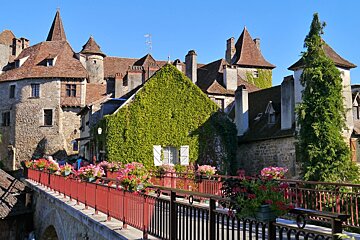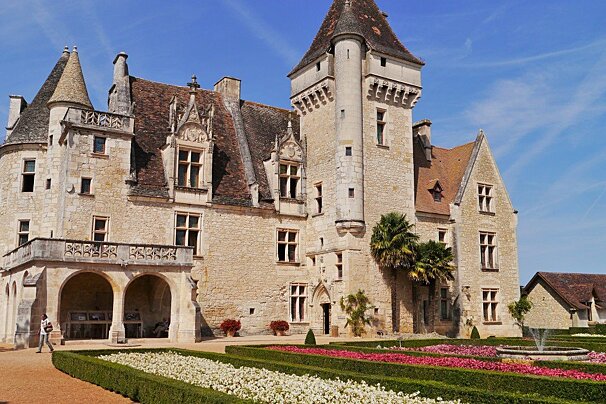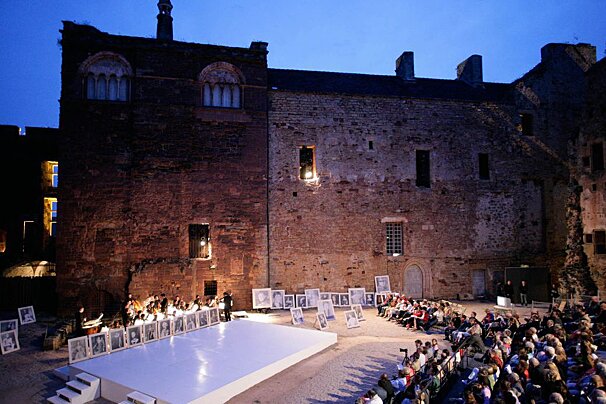Welcome to Dordogne
An area of natural beauty, rolling hills, old villages, castles and small country towns that are ripe to be explored and enjoyed by all who pass through or visit. The heart of the Dordogne is centred around the city and prefecture of Perogueux. The area is perhaps most famous for, amongst other things, its gourmet delights, notably paté de foie gras, walnuts and truffles.
The Perigord Noir is in the centre of the Dordogne region. Named for its dark woodlands, predominantly oak and walnut trees. The walnuts are used to make regional specialities, including oil. The Vézère valley cuts through its centre, creating impressive cliffs with many limestone caves. In terms of sights and attractions, these caves contain works of prehistoric interest and the region has many pretty villages with dark slate roofs. Its main town is Sarlet-la-Canéda, a medieval centre full of houses from the 15th and 16th centuries.
West of this is the Perigord Pourpre. Named purple because of its importance as a wine-growing region, this area covers the city of Bergerac and the south-west area of the Dordogne. It's pretty gentle hills, which are also covered in sunflowers, make this one of the most attractive areas to visit. It is also well served by the international airport at Bergerac.





























